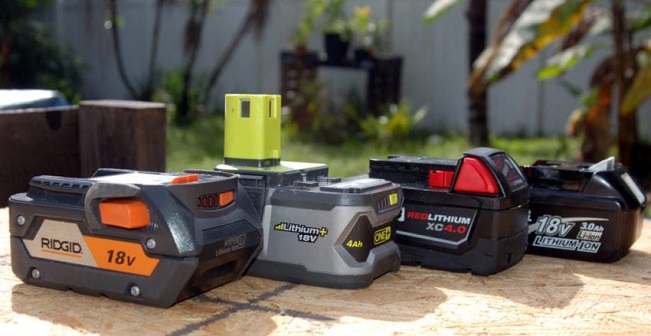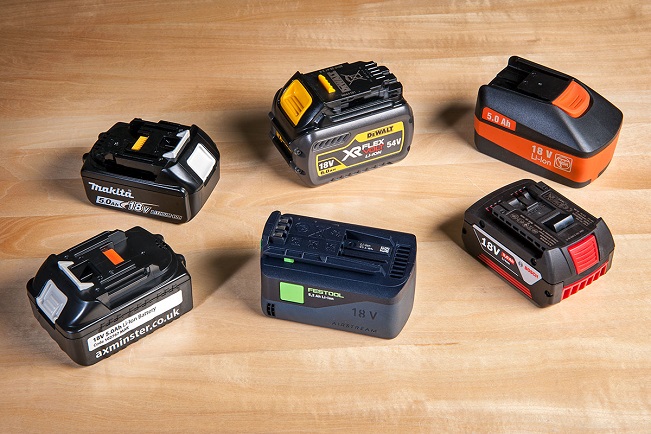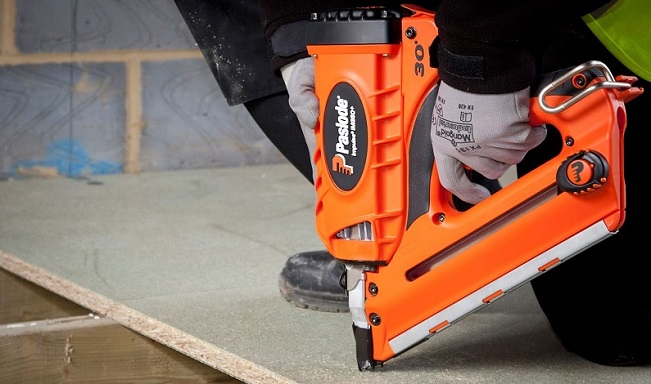
NiCD, NiMH, Li-ion, LiPo, voltage, ampere-hours… all these terms can make buying power tool batteries overwhelming. What do they mean? How do you know which one to get for your power tool? Do the higher ratings on one battery means it’s better than the rest? These are just a few questions that need to be addressed when buying cordless tool batteries, as they’ve come a long way in the past several years. If you would have told a carpenter that you just need a battery to power your portable drill, they’d probably think you were out of your mind.
Nowadays, cordless nail guns and drills are the most commonly used devices, and they’re all powered by tiny batteries. As a matter of fact, most of these portable cordless tools can perform just as well as their corded counterparts. The biggest problem batteries have is their running time, and there’s nothing more frustrating to handymen than their batteries running out halfway through a task. For that reason, the batteries you choose for the power tools can be as important as the power tools themselves. So, without further ado, here’s how to choose the most suitable battery for the job.
What Type of Battery is Best for Your Cordless Tools?
Nowadays, Li-ion batteries are considered the best for a few reasons. They can run for extended periods of time, are quick to recharge and have a long lifespan. It’s a good idea to shop for batteries made by the same manufacturer as your tools. So, for instance, if you have Paslode power tools, consider Paslode batteries; if you have Bosch power tools, consider Bosch batteries, etc. This will not only ensure compatibility, but optimum performance as well. But no matter whether you’re shopping for Bosch, Milwaukee, DEWALT or Paslode batteries, there are a few other factors to pay mind to.

Getting a Grip on Capacity and Other Specifications
Even when you’re shopping for power tools, you’ll notice that there are many battery requirements to power them. The most common ones you’ll come across are battery type, voltage and ampere-hours. As briefly aforementioned, a bigger rating doesn’t automatically mean a better battery. Other terms you’ll come across are cycle life, memory effect and self-discharge rate. Let’s break down what each of these terms mean.
Voltage
The voltage of a battery represents how much power it can provide. Simply put, more voltage equals more power output. Some cordless power tools require more power to run than others. For instance, a drill designed to make holes through timber will need more power than a drill designed for light-duty work. While a higher voltage rating usually means the tool is more powerful, it also means it’s heavier and more expensive. That being said, make sure you choose the right tool and batteries for the job, and bigger is not automatically better.
Ampere-Hours
The ampere-hours represent the amount of charge batteries deliver in an hour in ideal working conditions. For instance, a cordless drill that uses 3 amps of current will drain the entire charge of a 3Ah battery in one hour. Using that logic, a 6Ah battery will last for two hours on the same tool. Of course, this is assuming the drill uses 2 amps in ideal working conditions, which is rarely the case in reality. There’s also another factor to consider here – a 6Ah battery won’t last twice as long as a 3Ah one. In some cases, it might last twice more than twice as long. It all comes down to the type of battery, how it’s wired and its control circuitry. Still, you can get a general idea of how the battery will perform. So, what does Ah represent? Simply put, it’s the measure of how much charge it can provide.
Cycle Life

A battery’s cycle life represents how many times it can be discharged recharged before it loses its ability to retain its energy. For instance, Li-ion batteries usually have a cycle life of 300 to 500. So, in theory, you can charge it at least 300 times and up to 500 times before you’ll need to replace it.
Memory Effect
The memory effect of a battery is impacted when it’s partly drained, the charged without ever fully discharging. Basically, batteries have the ability to remember how much of their charge is drained before they’re recharged. As a result, they can use the shorter charge periods as their new capacity. However, not all batteries are prone to memory effect. Lithium batteries, for instance, aren’t prone to it.
Self-Discharge
When batteries are charged and they aren’t used right away, they’ll slowly start losing some of their charge. Some will lose the charge faster than others. Keep in mind that some self-discharge isn’t bad. For instance, if your tools aren’t stored away for long time periods, then you shouldn’t really care about their self-discharge. This metric is measured in percentage of lost charge per month.


























